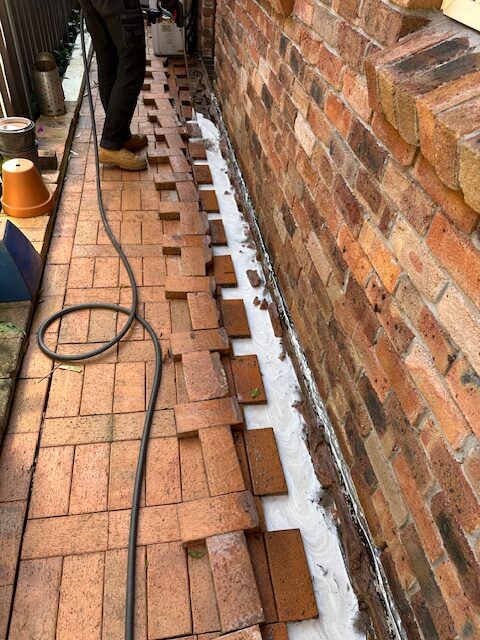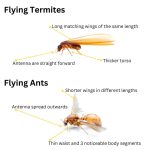Landscaping not only beautifies your home but also plays a critical role in the protection of essential termite barriers. These vital systems safeguard your property from destructive termite infestations, ensuring your home remains secure. However, certain landscaping practices can unintentionally weaken these defenses, risking the integrity of your protective measures. This comprehensive guide offers essential strategies and insights to help you make informed landscaping decisions that preserve the efficacy of your termite defenses while enhancing the aesthetic appeal of your outdoor spaces.
Explore the Essential Role of Termite Barriers in Protecting Your Home
Termite barriers are specialized protective measures, either physical or chemical, strategically installed around or beneath your home to prevent termites from gaining access. It is crucial for every homeowner to prioritize a comprehensive termite management system. Understanding the specific barriers you have in place is vital for effective property upkeep. To verify this, you can check the details located in your electrical meter box. These barriers are particularly critical in protecting structures, especially in regions like Sydney’s Hills District, where termite activity is significantly prevalent.
- Physical Barriers: Constructed from robust materials such as stainless steel mesh or graded stones, these barriers are installed below a building to effectively prevent termites from tunneling through.
- Chemical Barriers: This method entails applying liquid termiticides to the soil surrounding a structure, thereby creating a treated zone that deters or eliminates termites from accessing your home.

Recognize Landscaping Practices That May Compromise Termite Barriers
Many prevalent landscaping practices can unintentionally undermine the integrity of termite barriers, leading to vulnerabilities that increase the risk of severe infestations. Recognizing these practices is essential for maintaining robust protection against termites. By being aware of common landscaping pitfalls, homeowners can take proactive steps to safeguard their properties.
1. Planting Too Close to Your Home
When plants, shrubs, or trees are positioned too near your house, they can introduce a variety of issues:
- Roots may penetrate physical barriers or disrupt the treated soil in chemical barriers, significantly diminishing their effectiveness.
- Dense vegetation can retain moisture adjacent to the building’s foundation, creating a conducive environment for termites to thrive.
2. Adding New Soil or Mulch
Introducing layers of soil or mulch near the foundation can create a bridge over chemical barriers, allowing termites to bypass these essential protections. Organic mulch is particularly problematic as it can provide both food and shelter for termites, making it an attractive habitat for these pests.
3. Paving and Hardscaping Projects
The installation of paving, patios, or retaining walls near your property can disrupt existing termite barriers. The excavation and soil movement required for these projects might compromise the chemical seal or create gaps in physical barriers, leading to increased vulnerabilities and potential access points for termites.
4. Irrigation System Considerations
Poorly designed or overly watered irrigation systems can saturate the soil surrounding your foundation. This not only dilutes the effectiveness of the termiticides in chemical barriers but also fosters a favorable environment for termite proliferation, making it crucial to maintain proper irrigation practices.

Implement Landscaping Techniques That Protect Your Termite Barriers
1. Maintain Safe Distances from Your Home
- Keep a minimum distance of 50 cm between plants and trees and your home’s foundation, creating a protective buffer against termite access.
- Select smaller, non-invasive plants that are less likely to develop extensive root systems capable of interfering with your barriers.
2. Choose Termite-Resistant Mulch
- Opt for inorganic mulches such as gravel or stone, or consider using termite-resistant materials like cedar or cypress chips to minimize risk and deter termite activity.
- Limit mulch piles to a maximum height of 5 cm and ensure they are kept at least 15 cm away from the foundation to reduce moisture retention and discourage termite activity.
3. Avoid Disrupting the Barrier During Landscaping Activities
- Consult with a professional before undertaking any digging or installation of landscaping features near your home to prevent disturbing the termite barriers or termite baits.
- If soil alterations are necessary, it’s advisable to have the barrier reinspected and potentially retreated to ensure ongoing protection against termites and to maintain the integrity of your defenses.
4. Thoughtful Design Considerations in Landscaping
- Position irrigation systems away from the foundation to prevent excessive moisture accumulation near the barrier, which can attract termites and compromise your home’s defenses.
- Install root barriers for larger trees to prevent roots from encroaching on the termite barrier and causing potential damage, thereby preserving the effectiveness of your protections.
- Be mindful of termite reticulation pipes to avoid damaging them during landscaping activities, ensuring they remain intact for continued protection.
Urgent Steps to Take if Your Termite Barrier Has Been Compromised
If landscaping activities or unforeseen natural events have disturbed your termite barrier, it’s critical to act swiftly to protect your home:
- Schedule a Professional Inspection Immediately: A thorough termite inspection is essential to identify any vulnerabilities and determine if termites have breached your protective barriers.
- Reinforce Your Barrier Based on Expert Findings: Depending on the inspection results, physical barriers may require repairs, while chemical barriers might need retreatment or a top-up to restore their effectiveness.
- Implement Regular Monitoring Procedures: Routine inspections for termites are crucial to ensure that your barrier remains intact, and your property continues to be protected from infestations.
Innovative Landscaping Solutions to Enhance Termite Protection
With careful planning and strategic design, your landscaping can effectively bolster your termite protection efforts:
- Incorporate gravel paths or decorative stones along the foundation to create a dry zone that discourages termite activity and minimizes moisture retention.
- Utilize raised garden beds with adequate clearance from the house to reduce moisture retention near the foundation, thereby deterring termite proliferation.
- Regularly trim vegetation to promote proper ventilation and reduce moisture buildup, creating an inhospitable environment for termites and enhancing the overall health of your landscape.

With thoughtful design and planning, landscaping can be an asset rather than a liability for your termite barriers. By understanding how various landscape designs impact termite protection, you can achieve a beautiful, pest-free home environment. For expert termite advice or help with maintaining your barriers, contact our knowledgeable team today. Let us collaborate with you to secure your home while you create the landscape of your dreams.
The Article: Termite Barriers for Effective Landscaping Solutions first appeared on https://writebuff.com.
The Article Termite Barriers: Essential Solutions for Landscaping Was Found On https://limitsofstrategy.com


I’m really glad to see a post focusing on the delicate relationship between landscaping and termite barriers. It’s so easy to overlook how our outdoor choices can impact the overall health of our homes. I mean, when I first got into landscaping, I was all about aesthetic appeal—colorful flowers, manicured hedges, the whole nine yards. But then I learned the hard way how certain plants near the foundation can lead to moisture retention, which, as you pointed out, is a total red flag for attracting pests like termites.
It’s refreshing to see a focus on the intersection of landscaping and structural integrity, particularly regarding termite barriers! I’ve always believed that the beauty of our outdoor spaces shouldn’t come at the cost of our home’s safety. Over the years, I’ve learned the hard way that certain landscaping choices can have a significant impact on the effectiveness of these barriers.